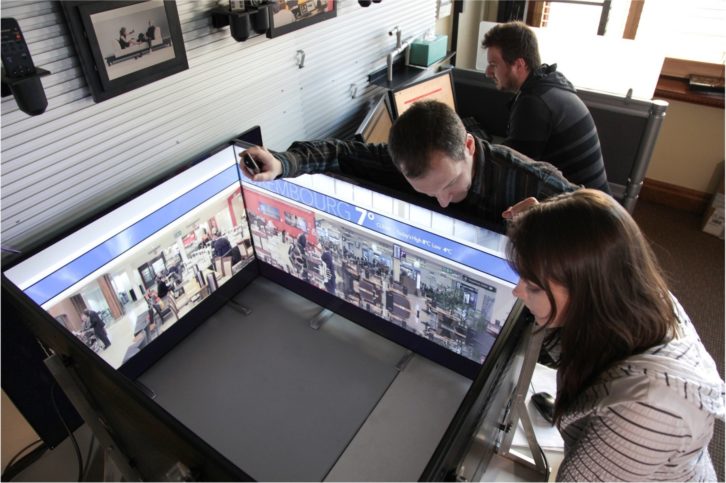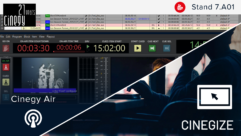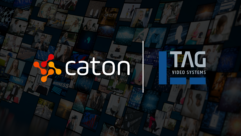
The relevance of digital signage has become increasingly important for any organization looking to broaden its communication strategy. Organizations already exercising an omnichannel communication strategy get to enjoy a new publishing target, digital screens. Digital screen content, like other forms of communication, needs to start with the message you are trying to convey or the challenge you are trying to solve. Ensuring your digital network has enough engaging content can be challenging. The worst thing for your audience to see is the same thing over and over again, especially when that content is no longer relevant. Not to mention, producing new pieces of content each day can be burdensome for companies with small teams. We’ll get to how to “feed the content beast” in a moment but first, let’s focus on starting your project off on the right foot. The best place to start with a digital signage project is to answer a few key questions:
- What is the objective of this project?
- What communication are we trying to solve?
- Who are we trying to communicate to?
- Why are we trying to communicate to this audience?
- What messaging is important to your audience?
Answering these questions isn’t always easy, it’s always a good idea to nominate a project champion, someone who oversees the project from ideation all the way to execution. This individual is also responsible for managing the various stakeholders involved and ensuring they share a collective vision for the project’s execution. An effective method for streamlining this process is to hold a workshopping session at the point of project ideation. A content workshop covers a series of activities to help answer the above questions but also gives stakeholders a better understanding of what’s involved. The activities can include:
- Site survey the location, where is the best place for digital displays?
- Journey mapping your audience’s day
- Card sorting to discover the breadth and depth of communications
- Understanding digital signage software governance and workflow process
- Defining how success will be measured
These workshops can be a lot of fun and catered to your specific project needs, giving you flexibility in your approach to determining the best direction for implementing digital signage.
Leveraging workshops to help answer your key project questions also gives you insight into the creative strategy to take with your content. While journey mapping your audience, this will give you a clear idea of the information they absorb daily. Knowing that, you can tailor the type of messaging you want to get in front of them, even scheduling pieces to display at specific times of the day. A simple understanding of how people move through your space will give you the ability to put the right content in front of them at the right time.
 How content should be designed depends on the brand you represent, it’s always important to create an overarching style guide for how your content will look. No one wants to see a hodgepodge of PowerPoint templates on screen. Also, less is more with screen communication, you have a short period of time to grab the user’s attention. Make sure your messaging is clear and concise to grab the audience’s attention, having a paragraph of text on screen will only detract from your content. When it comes to large scale deployments, it can sometimes be challenging for people to visualize what content and space will look like. Luckily, there are a lot of tools out there today that make it easy to get a preview before deployment. Things like augmented reality and virtual reality allow you to create the environment in which your signage will appear without having to physically be there. This makes the content creation process more collaborative and easier for your clients to get a clear picture of the end results. Some people take it one step further with physical models! With advancements in technology, screens are small and flexible enough to be integrated into models of your physical space. Similar to the AR/VR methods, it gives the stakeholders the ability to see how their project is progressing, and what the result will be.
How content should be designed depends on the brand you represent, it’s always important to create an overarching style guide for how your content will look. No one wants to see a hodgepodge of PowerPoint templates on screen. Also, less is more with screen communication, you have a short period of time to grab the user’s attention. Make sure your messaging is clear and concise to grab the audience’s attention, having a paragraph of text on screen will only detract from your content. When it comes to large scale deployments, it can sometimes be challenging for people to visualize what content and space will look like. Luckily, there are a lot of tools out there today that make it easy to get a preview before deployment. Things like augmented reality and virtual reality allow you to create the environment in which your signage will appear without having to physically be there. This makes the content creation process more collaborative and easier for your clients to get a clear picture of the end results. Some people take it one step further with physical models! With advancements in technology, screens are small and flexible enough to be integrated into models of your physical space. Similar to the AR/VR methods, it gives the stakeholders the ability to see how their project is progressing, and what the result will be.
New folks entering this space often feel they must fill up an entire day’s worth of messaging each day like a TV channel. This is not always the case with screen communication; simple, time-based messaging can be effective and often re-used. The question becomes, how do you easily keep content feeling fresh and up to date? The key is automation!
What do we mean by automation?
- Use online sources to fill pre-made content templates in your display software.
- Connect your internal data sources to your display software.
- Add screen content as a publishing target to your existing content creation workflow.
- Subscribe to a library of ready-made content.
- In the industry, we commonly refer to these automation sources as “dynamic data”, it’s an easy way to “feed the content beast”
Content automations create a simple and streamlined way to engage with patrons. For retailers, automations can help deploy content to multiple locations around the globe with a simple click. Think about new products launches and how easy they become, to pick a date and set the time to deploy your content across thousands of screens.
What about corporate lobbies that receive high-profile visitors? Setting up a VIP welcome automation with meeting details is quick and easy and can be done well in advance of the visit. There are many bits of content that can be automated. It’s an excellent tool to keep in your quiver, to further enhance your brand’s messaging.
So, the key to getting things right is proper planning. Nominating a project champion will allow you to streamline the entire project using tools like workshops to gather important information and to develop a strategy. These information-gathering sessions make it easy to get everyone on the same page and determine your direction for any milestone. While some people feel content strategy can be daunting, the power of content automation will keep your network running fresh new content well into the future.










